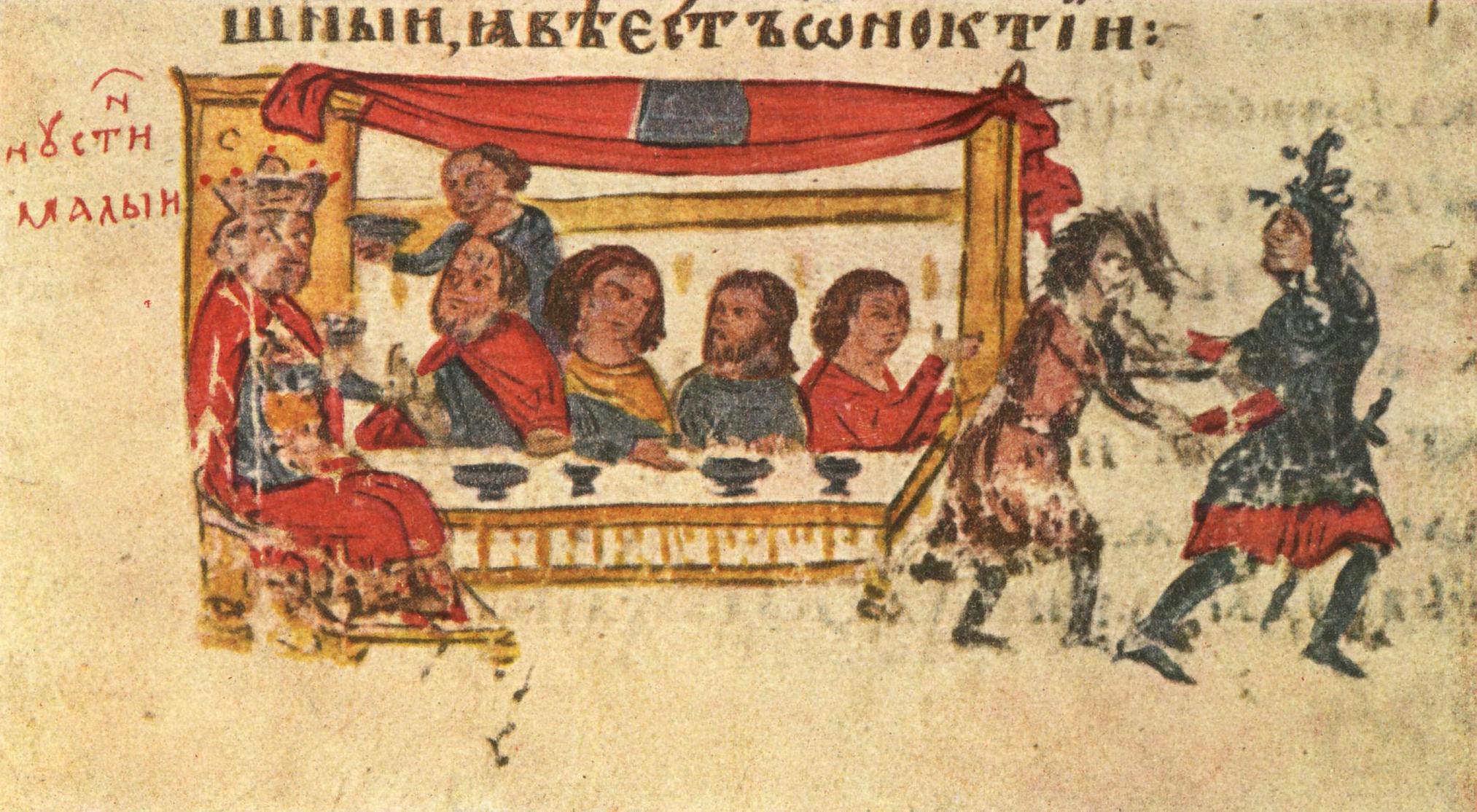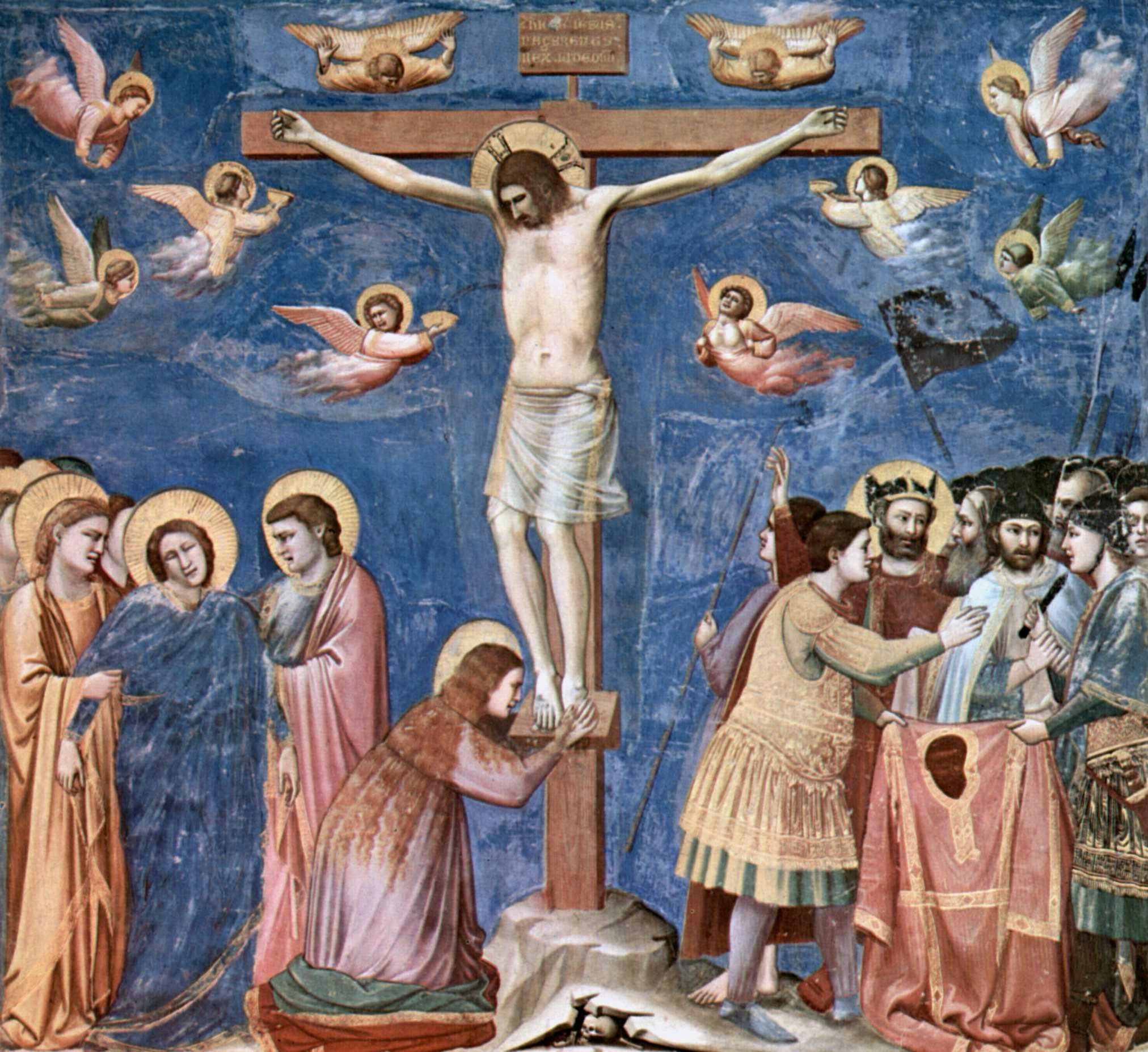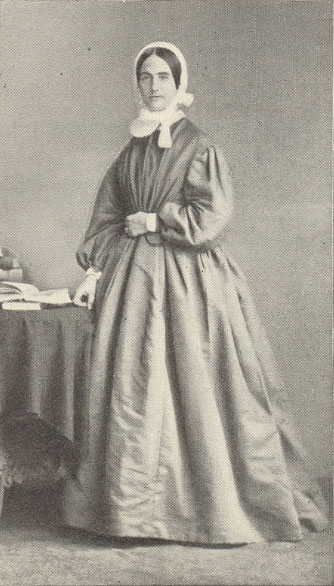|
Radegonde
Radegund ( la, Radegundis; also spelled ''Rhadegund, Radegonde, or Radigund''; 520 – 13 August 587) was a Thuringian princess and Frankish queen, who founded the Abbey of the Holy Cross at Poitiers. She is the patron saint of several churches in France and England and of Jesus College, Cambridge (whose full name is "The College of the Blessed Virgin Mary, Saint John the Evangelist ''and the glorious Virgin Saint Radegund'', near Cambridge"). Life Radegund was born about 520 to Bertachar, one of the three kings of the German land Thuringia."St. Radegund", Jesus College, Cambridge Radegund's uncle, Hermanfrid, killed Bertachar in battle, and took Radegund into his household. After ally ... [...More Info...] [...Related Items...] OR: [Wikipedia] [Google] [Baidu] |
Poitiers
Poitiers (, , , ; Poitevin: ''Poetàe'') is a city on the River Clain in west-central France. It is a commune and the capital of the Vienne department and the historical centre of Poitou. In 2017 it had a population of 88,291. Its agglomeration has 130,853 inhabitants in 2016 and is the center of an urban area of 261,795 inhabitants. With more than 29,000 students, Poitiers has been a major university city since the creation of its university in 1431, having hosted René Descartes, Joachim du Bellay and François Rabelais, among others. A city of art and history, still known as "''Ville aux cent clochers''" the centre of town is picturesque and its streets include predominantly historical architecture and half-timbered houses, especially religious architecture, mostly from the Romanesque period ; including notably the Saint-Jean baptistery (4th century), the hypogeum of the Dunes (7th century), the Notre-Dame-la-Grande church (12th century), the Saint-Porchaire church ... [...More Info...] [...Related Items...] OR: [Wikipedia] [Google] [Baidu] |
Clotaire I
Chlothar I, sometime called "the Old" (French: le Vieux), (died December 561) also anglicised as Clotaire, was a king of the Franks of the Merovingian dynasty and one of the four sons of Clovis I. Chlothar's father, Clovis I, divided the kingdom between his four sons. In 511, Clothar I inherited two large territories on the Western coast of Francia, separated by the lands of his brother Childebert I's Kingdom of Paris. Chlothar spent most of his life in a campaign to expand his territories at the expense of his relatives and neighbouring realms in all directions. His brothers avoided outright war by cooperating with Chlothar's attacks on neighbouring lands in concert or by invading lands when their rulers died. The spoils were shared between the participating brothers. By the end of his life, Chlothar had managed to reunite Francia by surviving his brothers and seizing their territories after they died. But upon his own death, the Kingdom of the Franks was once again divide ... [...More Info...] [...Related Items...] OR: [Wikipedia] [Google] [Baidu] |
Holy Cross Abbey (Poitiers)
The Abbey of the Holy Cross was a French Benedictine monastery of nuns founded in the 6th century. Destroyed during the French Revolution, a new monastery with the same name was built in a nearby location during the 19th century for a community of Canonesses of St. Augustine of the Mercy of Jesus. History Founding The abbey was founded in 552 by the Frankish queen, Radegund (french: Radegonde) as the first monastery for women in the Frankish Empire in what is now the village of Saint-Benoît, Vienne. It was founded due to a threat of excommunication of her husband, King Chlothar I, King of the Franks, by Germain, the Bishop of Paris. To avoid this penalty, the king provided the bishop with the funds to acquire lands near the episcopal palace to construct the Abbey of St. Mary (french: Abbaye de Sainte-Marie), as it was originally called . As his third wife had failed to provide him an heir, the king allowed Radegund to become a nun in the new monastery. The first abbess was Agn ... [...More Info...] [...Related Items...] OR: [Wikipedia] [Google] [Baidu] |
Roman Catholic Church
The Catholic Church, also known as the Roman Catholic Church, is the largest Christian church, with 1.3 billion baptized Catholics worldwide . It is among the world's oldest and largest international institutions, and has played a prominent role in the history and development of Western civilization. O'Collins, p. v (preface). The church consists of 24 ''sui iuris'' churches, including the Latin Church and 23 Eastern Catholic Churches, which comprise almost 3,500 dioceses and eparchies located around the world. The pope, who is the bishop of Rome, is the chief pastor of the church. The bishopric of Rome, known as the Holy See, is the central governing authority of the church. The administrative body of the Holy See, the Roman Curia, has its principal offices in Vatican City, a small enclave of the Italian city of Rome, of which the pope is head of state. The core beliefs of Catholicism are found in the Nicene Creed. The Catholic Church teaches that it is t ... [...More Info...] [...Related Items...] OR: [Wikipedia] [Google] [Baidu] |
Sigebert
Sigebert (which means roughly "magnificent victory"), also spelled Sigibert, Sigobert, Sigeberht, or Siegeberht, is the name of: Frankish and Anglo-Saxon kings * Sigobert the Lame (died c. 509), a king of the Franks * Sigebert I, King of Austrasia (reigned 561–575) * Sigebert II, King of Austrasia and Burgundy (reigned 613) * Sigebert III, King of Austrasia (reigned 634–656) * Sigeberht the Little, King of Essex (reigned 623?–653) * Sigeberht the Good, a king of Essex (reigned c. 653–660) * Sigeberht of East Anglia, saint and a king of the East Angles (reigned c. 629–c. 634) * Sigeberht of Wessex, King of Wessex (reigned 756–757) Others * Sigebert of Gembloux (c. 1030–1112), Belgian medieval author and historian * Sigebert Buckley (c. 1520–probably 1610), Benedictine monk in England * Sigebert IV According to the pseudohistorical '' Dossiers Secrets d'Henri Lobineau'' and related documents, Sigebert IV was the son of the Merovingian king Dagobert II who, on ... [...More Info...] [...Related Items...] OR: [Wikipedia] [Google] [Baidu] |
Maroveus Of Poitiers
Maroveus (french: Marovée) was the bishop of Poitiers in the late sixth century, between 565×573 and 590×594. Maroveus's predecessor, Pascentius, took over around 561 during the reign of Charibert I, but the date of the end of his episcopate is unknown. Pascentius was still bishop in 565, when Venantius Fortunatus dedicated his ''Life'' of Hilary of Poitiers to him. Maroveus became bishop before 573, while Sigebert I was king. His episcopate for the period 585–590 is well known because Gregory of Tours's ''History of the Franks''. According to Gregory of Tours, in 585, King Guntram demanded the submission of Poitiers, which he claimed had broken its oath to him. Maroveus declined on behalf of the people, whereupon the region was ravaged. When Guntram's envoys again demanded submission, Maroveus melted down a chalice to make coin to pay them off., dates this episode to 584. Maroveus was on poor terms with Queen Radegund and her religious foundation in Poitiers, Holy Cross Abbey ... [...More Info...] [...Related Items...] OR: [Wikipedia] [Google] [Baidu] |
Justin II
Justin II ( la, Iustinus; grc-gre, Ἰουστῖνος, Ioustînos; died 5 October 578) or Justin the Younger ( la, Iustinus minor) was Eastern Roman Emperor from 565 until 578. He was the nephew of Justinian I and the husband of Sophia, the niece of the Empress Theodora, and was therefore a member of the Justinian dynasty. Justin II inherited a greatly enlarged but overextended empire, with far less resources at his disposal compared to Justinian I. Despite this, he strived to match his formidable uncle's reputation by abandoning the payment of tributes to the Empire's neighbors. This miscalculated move resulted in rekindling of war with the Sassanid Empire, and in a Lombard invasion which cost the Romans much of their territory in Italy. Family He was a son of Vigilantia and Dulcidio (sometimes rendered as Dulcissimus), respectively the sister and brother-in-law of Justinian. His siblings included Marcellus and Praejecta. With Sophia he had a daughter Arabia and possib ... [...More Info...] [...Related Items...] OR: [Wikipedia] [Google] [Baidu] |
Byzantine Emperor
This is a list of the Byzantine emperors from the foundation of Constantinople in 330 AD, which marks the conventional start of the Eastern Roman Empire, to its fall to the Ottoman Empire in 1453 AD. Only the emperors who were recognized as legitimate rulers and exercised sovereign authority are included, to the exclusion of junior co-emperors (''symbasileis'') who never attained the status of sole or senior ruler, as well as of the various usurpers or rebels who claimed the imperial title. The following list starts with Constantine the Great, the first Christian emperor, who rebuilt the city of Byzantium as an imperial capital, Constantinople, and who was regarded by the later emperors as the model ruler. It was under Constantine that the major characteristics of what is considered the Byzantine state emerged: a Roman polity centered at Constantinople and culturally dominated by the Greek East, with Christianity as the state religion A state religion (also called relig ... [...More Info...] [...Related Items...] OR: [Wikipedia] [Google] [Baidu] |
True Cross
The True Cross is the cross upon which Jesus was said to have been crucified, particularly as an object of religious veneration. There are no early accounts that the apostles or early Christians preserved the physical cross themselves, although protective use of the sign of the cross was common by at least the 2nd century. Post- Nicene historians such as Socrates of Constantinople relate that Helena, the mother of the Roman emperor ConstantineI, travelled to the Holy Land in the years 326–328, founding churches and establishing relief agencies for the poor. The late 4th-century historians Gelasius of Caesarea and Tyrannius Rufinus claimed that while there she discovered the hiding place of three crosses that were believed to have been used at the crucifixion of Jesus and the two thieves, St. Dismas and Gestas, executed with him. To one cross was affixed the titulus bearing Jesus's name, but according to Rufinus, Helena was not sure until a miracle revealed that this was ... [...More Info...] [...Related Items...] OR: [Wikipedia] [Google] [Baidu] |
Caesaria The Younger
Caesaria the Younger or Caesaria II (died ) was the abbess of Saint-Jean d'Arles from around 525 until her death. Life Caesaria was a relative of Bishop Caesarius of Arles, probably a niece. She succeeded the bishop's sister, Caesaria the Elder, as abbess around 525. She was appointed by Caesarius, who issued a revised rule for the convent on 22 June 534 granting the nuns the right to elect their abbess in the future. Around the same time, he made his last will and testament, in which he bequeathed Caesaria a cloak which she had previously made for him. Sometime after Caesarius's death in 542, Caesaria commissioned Cyprian of Toulon to write his biography. She may have intended it to counter the influence of a new monastery founded by Aurelian of Arles in 547. Cyprian describes her abbacy thus: "Her work with her companions is so outstanding that in the midst of psalms and fasts, vigils and readings, the virgins of Christ beautifully copy out the holy books, with their mother hers ... [...More Info...] [...Related Items...] OR: [Wikipedia] [Google] [Baidu] |
Caesarius Of Arles
Caesarius of Arles ( la, Caesarius Arelatensis; 468/470 27 August 542 AD), sometimes called "of Chalon" (''Cabillonensis'' or ''Cabellinensis'') from his birthplace Chalon-sur-Saône, was the foremost ecclesiastic of his generation in Merovingian Gaul.William E. Klingshirn: ''Caesarius of Arles : The Making of a Christian Community in Late Antique Gaul'', Cambridge University Press, 1994). Caesarius is considered to be of the last generation of church leaders of Gaul who worked to promote large-scale ascetic elements into the Western Christian tradition. William E. Klingshirn's study of Caesarius depicts Caesarius as having the reputation of a "popular preacher of great fervour and enduring influence".Conrad Leyser, "Authority and Asceticism from Augustine to Gregory the Great" Among those who exercised the greatest influence on Caesarius were Augustine of Hippo, Julianus Pomerius, and John Cassian. The most important problem for Caesarius was the efficiency of the bishop's fu ... [...More Info...] [...Related Items...] OR: [Wikipedia] [Google] [Baidu] |
Deaconess
The ministry of a deaconess is, in modern times, a usually non-ordained ministry for women in some Protestant, Oriental Orthodox, and Eastern Orthodox churches to provide pastoral care, especially for other women, and which may carry a limited liturgical role as well. The word comes from the Greek (), for "deacon", which means a servant or helper and occurs frequently in the Christian New Testament of the Bible. Deaconesses trace their roots from the time of Jesus Christ through to the 13th century in the West. They existed from the early through the middle Byzantine periods in Constantinople and Jerusalem; the office may also have existed in Western European churches. There is evidence to support the idea that the diaconate including women in the Byzantine Church of the early and middle Byzantine periods was recognized as one of the major non-ordained orders of clergy. The English separatists unsuccessfully sought to revive the office of deaconesses in the 1610s in their Amst ... [...More Info...] [...Related Items...] OR: [Wikipedia] [Google] [Baidu] |


.jpg)



